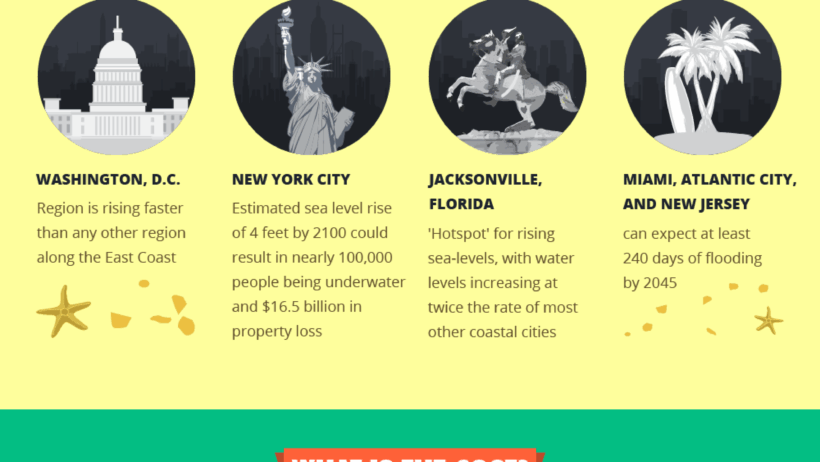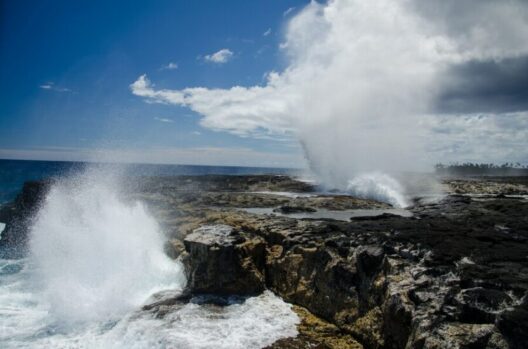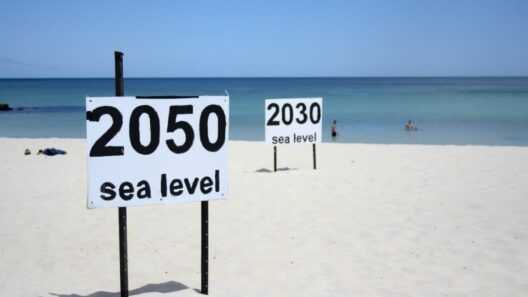The phenomenon of rising sea levels has emerged as one of the most pressing issues of our time, posing significant risks to coastal communities, economies, and ecosystems. This article delves into the multifaceted factors responsible for the ongoing increase in ocean levels, encouraging a shift in perspective on this critical global challenge. Understanding the intricate interplay of these elements not only raises awareness but also fuels a collective call to action.
The science of sea level rise is both compelling and alarming, weaving together myriad threads of climatic and geological changes. These forces collectively contribute to a global crisis that requires immediate attention and informed action.
Understanding Melting Ice: The Polar Paradigm Shift
The Earth’s polar regions are experiencing unprecedented warming, leading to the accelerated melting of glaciers and ice sheets. This phenomenon is primarily observed in Greenland and Antarctica, where vast expanses of ice are disintegrating. As these ice formations lose mass, they release freshwater into the oceans, contributing directly to rising sea levels.
Recent studies have illuminated the consequences of this melting ice, revealing that the rate of ice loss has tripled over the past few decades. The Greenland Ice Sheet, for instance, is currently shedding ice at an alarming capacity of around 280 gigatons per year. The ramifications of this phenomenon extend beyond mere statistics; they represent a dire shift in the Earth’s hydrological balance and underscore the immediate need for concerted climate action.
A further layer of complexity is added by the thermal expansion of seawater. As global temperatures rise, the oceans absorb heat, resulting in the expansion of water molecules. This thermal expansion accounts for nearly half of the observed sea level rise. Thus, the intricate relationship between temperature increases and ocean volume not only complicates predictions but also challenges coastal management strategies.
The role of ice dynamics cannot be overlooked in a thorough examination of sea level dynamics. Ice shelves, which serve as the protective barriers of major ice sheets, are also succumbing to climate change. The destabilization of these floating icings may facilitate more rapid ice loss from land-based glaciers, culminating in even greater surges in sea level. This interconnected network of ice-melting processes illustrates the urgency of addressing climate change holistically, considering its cascading effects on global sea levels.
The Human Factor: Urbanization and Land Use
While natural phenomena play a pivotal role in rising sea levels, human activity cannot be disregarded. Urbanization, particularly in coastal areas, significantly exacerbates vulnerabilities. The rapid expansion of cities along coastlines, with their accompanying infrastructure, places immense pressure on ecosystems that serve as natural buffers against rising tides.
Coastal wetlands, mangroves, and coral reefs act as vital defenses, absorbing wave energy and mitigating flooding. However, these ecosystems are often destroyed or compromised for urban development, agriculture, and industry. As a result, the natural resilience of coastal regions diminishes, leading to greater susceptibility to flooding during storms as well as persistent inundation due to rising sea levels.
Moreover, the effects of land reclamation projects present another threat. Such ventures often involve altering natural shorelines, leading to increased erosion and habitat loss. This degradation not only affects biodiversity but also negates the natural protection these ecosystems provide, amplifying the impact of sea level rise on human settlements.
In light of these realities, a re-evaluation of development strategies is crucial. Sustainable urban planning must incorporate ecological preservation and restoration, ensuring that natural barriers are maintained and enhanced. Failing to do so not only jeopardizes coastal communities but also contradicts the very essence of sustainable development.
Climate Policy: A Global Responsibility
The enormity of the sea level rise challenge underscores the necessity for robust climate policies at both national and international levels. Efforts to combat climate change must prioritize initiatives aimed at reducing greenhouse gas emissions. Transitioning to renewable energy sources, implementing energy efficiency measures, and enhancing carbon capture technologies are pivotal in addressing the root causes of climate-related sea level rise.
International cooperation is equally vital. Climate change knows no boundaries; rising sea levels affect nations globally, making collaborative frameworks essential for effective mitigation. Agreements such as the Paris Accord exemplify the potential for coordinated action in addressing climate challenges. However, tangible commitments and accountability are required to ensure that countries fulfill their pledges and work collectively toward effective solutions.
In addition to mitigation efforts, adaptation strategies must also be of paramount importance. Coastal communities should engage in comprehensive planning that addresses sea level rise. This may involve restoring wetlands, constructing seawalls, and revising zoning laws to minimize risk. The focus should shift from merely responding to the effects of rising sea levels to proactively managing and mitigating their impacts.
In conclusion, the dynamics of rising sea levels present a complex tapestry woven from natural and anthropogenic threads. By acknowledging the multi-layered causes—from the melting ice sheets to the human influence on coastal habitats—individuals and communities can empower themselves to foster sustainable practices. Now is the time for an invigorated commitment to protecting our coastlines, ensuring their resilience, and securing a sustainable future for generations to come.








